Air Force One, the iconic symbol of American power and prestige, is more than just a customized Boeing 747. It’s a flying White House, a secure command center, and a marvel of engineering. While it boasts luxurious amenities and state-of-the-art technology, one question often sparks curiosity: How Fast Does Air Force One Fly?
This isn’t just about getting the President from point A to point B quickly. The speed of Air Force One is intrinsically linked to its mission, security, and capabilities. Let’s delve into the facts and explore the impressive velocity of this airborne fortress.
Air Force One: More Than Just Speed, But Speed Matters
While comfort and security are paramount, Air Force One’s speed is a critical component of its functionality. It’s designed to travel rapidly across the globe, ensuring the President can reach any corner of the world efficiently and safely.
Here’s a closer look at some key aspects where speed, and overall capabilities, come into play, revealing why Air Force One is truly in a class of its own:
1. Two of a Kind: The Presidential Fleet
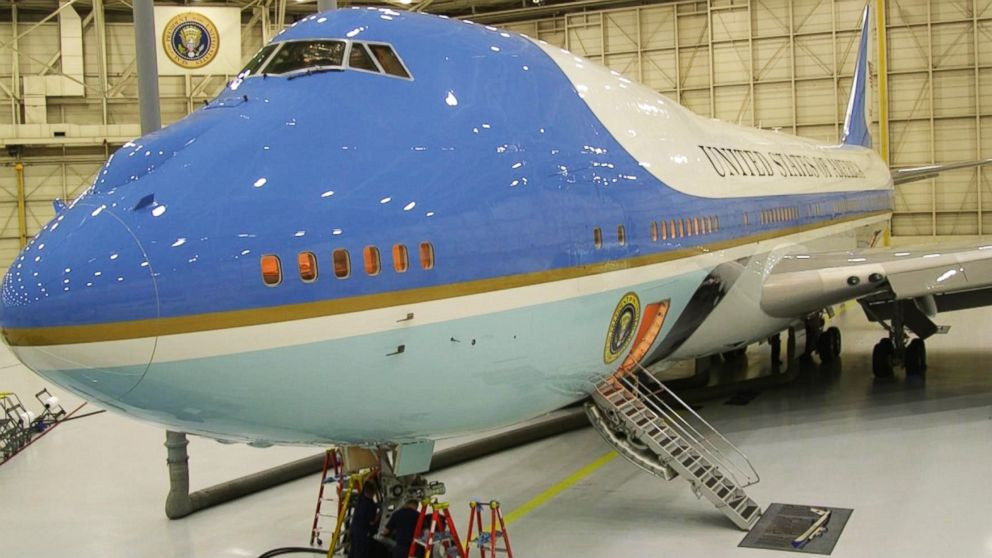 Air Force One is pictured.
Air Force One is pictured.
Contrary to its singular name, “Air Force One” actually refers to two identical Boeing 747-200B aircraft, specifically designated as VC-25A. Having duplicate planes ensures operational readiness and flexibility. If one aircraft is undergoing maintenance, the other is always prepared to serve as the presidential transport. This redundancy is crucial for maintaining the President’s demanding travel schedule and ensuring uninterrupted connectivity with global affairs.
2. Refueling in Mid-Air: Uninterrupted Journeys
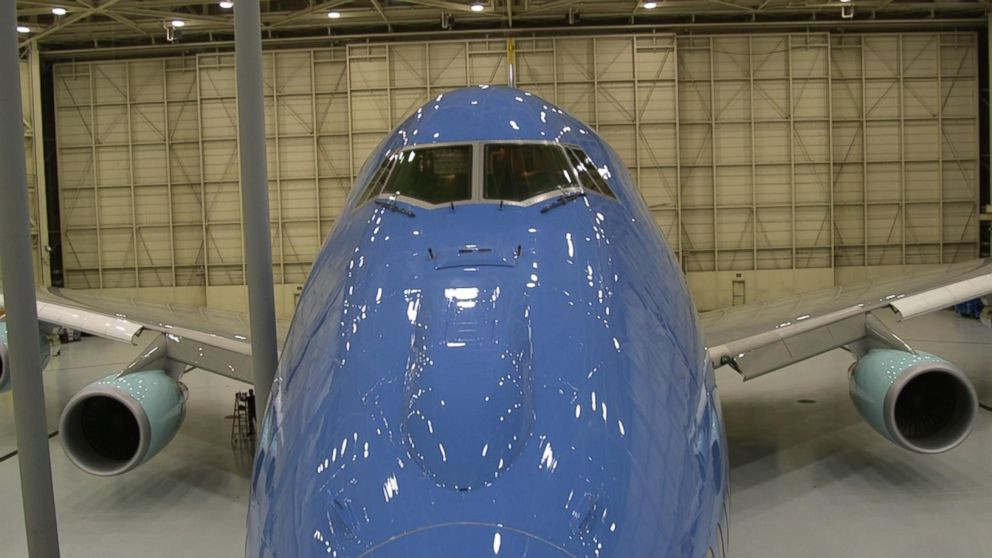 View of the in-flight refueling compartment on the nose of Air Force One.
View of the in-flight refueling compartment on the nose of Air Force One.
To maximize its operational range and endurance, Air Force One is equipped with in-flight refueling capabilities. This remarkable feature allows the aircraft to stay airborne indefinitely by receiving fuel from a tanker plane while in flight. While primarily reserved for emergency situations or extended operational needs, this capability underscores the plane’s capacity for long-duration missions and its ability to operate independently of traditional airport refueling. The refueling port, discreetly integrated into the aircraft’s nose, highlights the advanced engineering and preparedness built into Air Force One.
3. 接近音速的速度: How Fast Does Air Force One Really Fly? (Approaching Supersonic Speed: How Fast Does Air Force One Really Fly?)
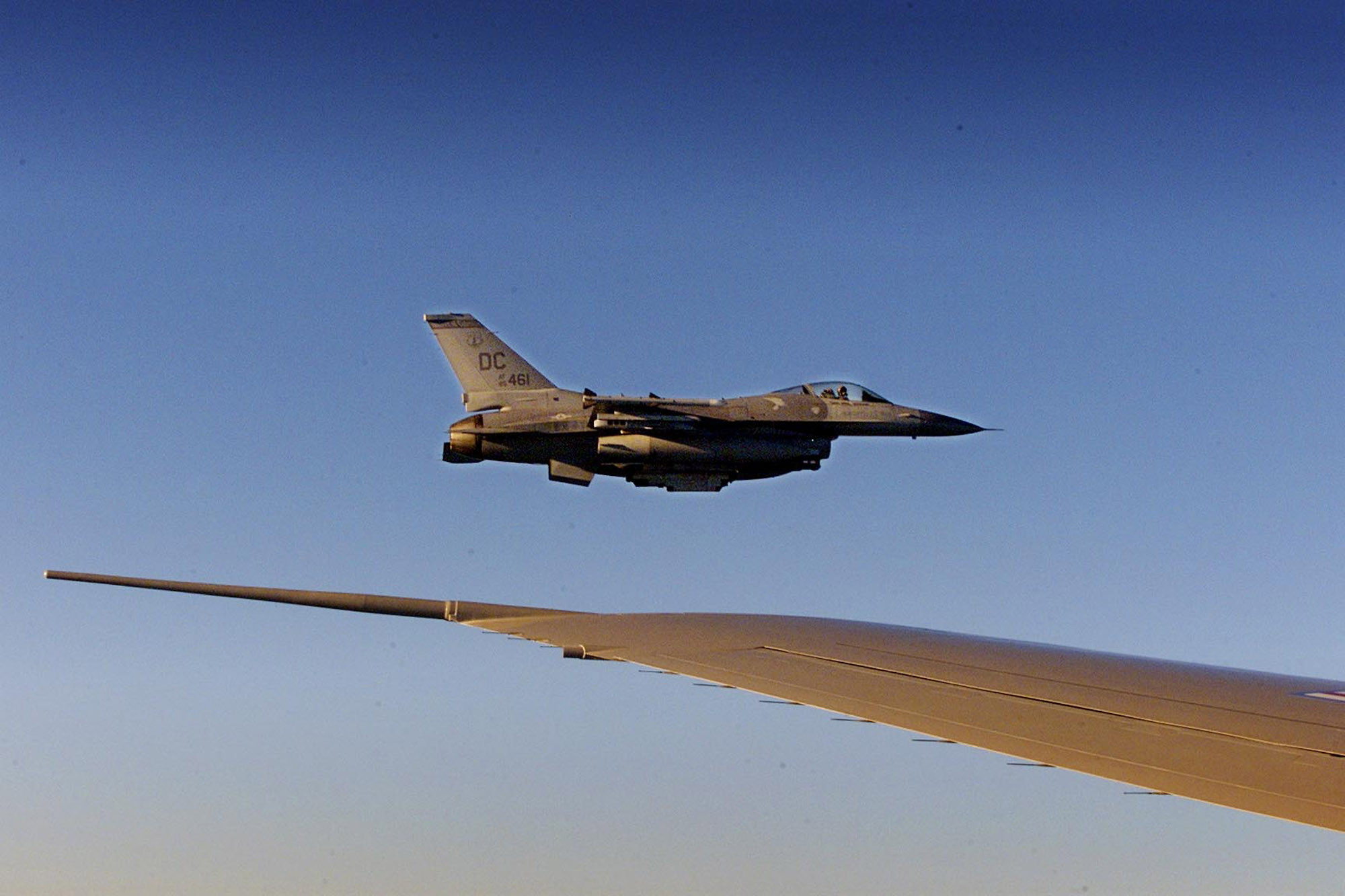 An F-16 fighter flies just off the wing of Air Force One on a flight back to Washington, Sept. 11, 2001.
An F-16 fighter flies just off the wing of Air Force One on a flight back to Washington, Sept. 11, 2001.
Air Force One is capable of reaching speeds exceeding 600 miles per hour, which is about 92% of the speed of sound. This impressive velocity was notably demonstrated on September 11, 2001, when escorting F-16 fighter jets struggled to keep pace and had to request the presidential plane to slow down. Former pilot Col. Mark Tillman recounted that Air Force One was traveling at near supersonic speeds that day. While not technically supersonic, its near-supersonic speed ensures rapid transit and the ability to outpace potential threats. This speed is a testament to the powerful engines and aerodynamic design of the VC-25A.
4. Secure Communication: Command Center in the Sky
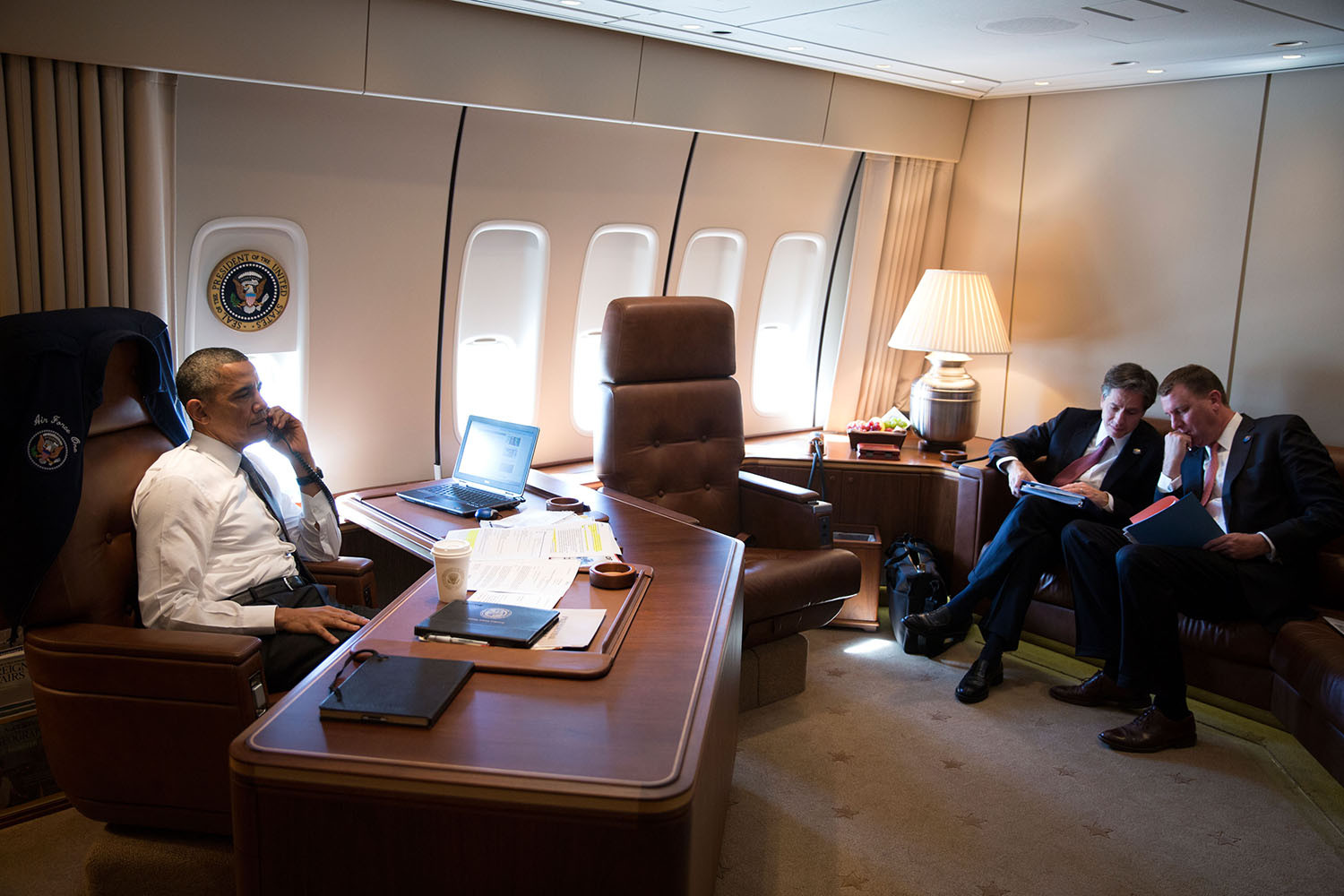 PHOTO: President Barack Obama talks on the phone with Israeli Prime Minister Benjamin Netanyahu aboard Air Force One en route to New Orleans, La., Nov. 8, 2013.
PHOTO: President Barack Obama talks on the phone with Israeli Prime Minister Benjamin Netanyahu aboard Air Force One en route to New Orleans, La., Nov. 8, 2013.
Beyond speed, Air Force One functions as a mobile command center. Equipped with an advanced, encrypted telecommunications system, the President can maintain secure contact with anyone globally. With 87 phones onboard, the aircraft ensures constant connectivity. In a national emergency, Air Force One can serve as an airborne command post, complete with high-speed internet and video-teleconferencing capabilities for addressing the nation. This robust communication infrastructure is vital for presidential leadership and decision-making while traveling.
5. Spacious Interiors: A Flying White House
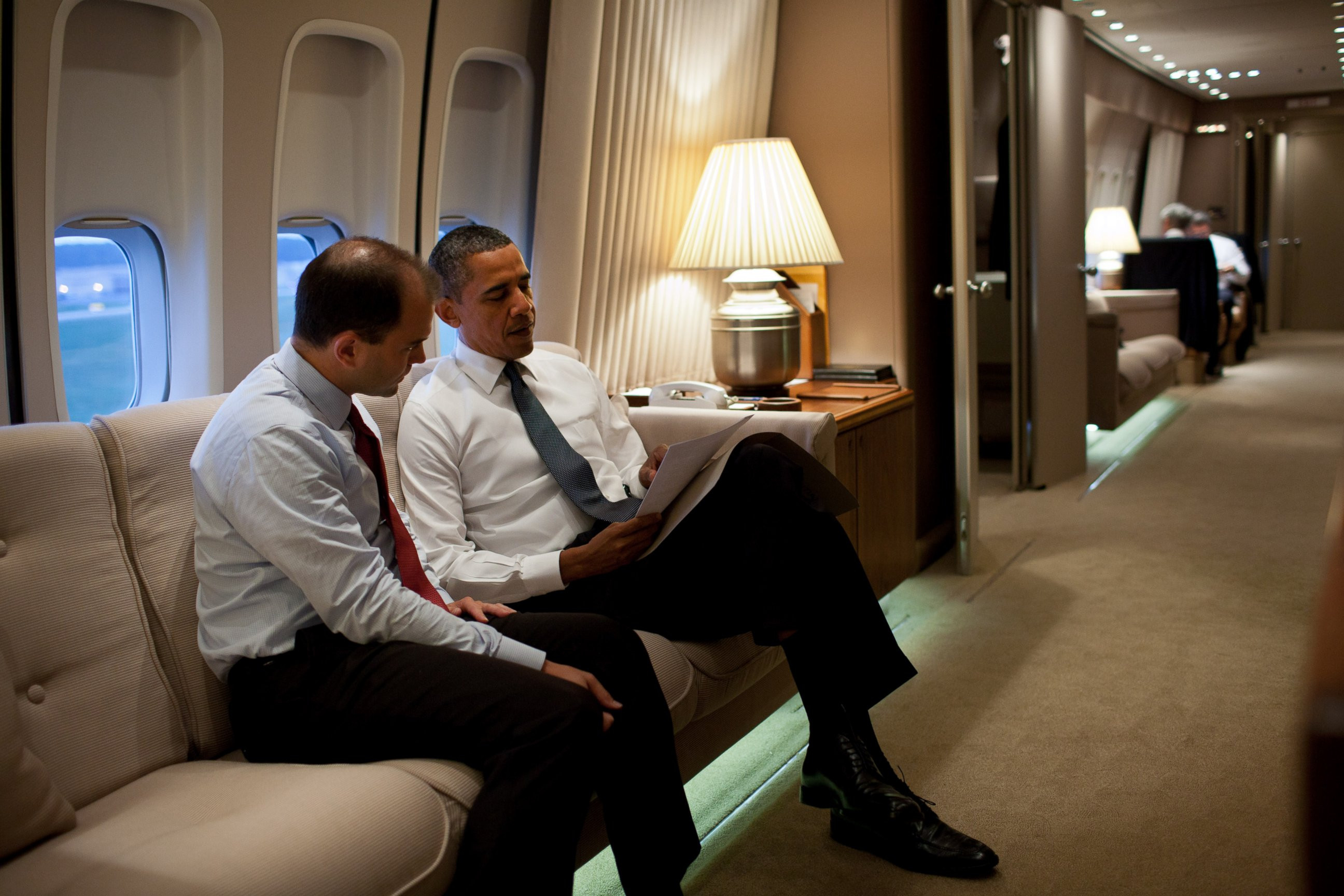 PHOTO: President Barack Obama talks with Ben Rhodes, Deputy National Security Advisor for Strategic Communications, aboard Air Force One en route to New York, N.Y., to commemorate the tenth anniversary of the 9/11 attacks against the United States.
PHOTO: President Barack Obama talks with Ben Rhodes, Deputy National Security Advisor for Strategic Communications, aboard Air Force One en route to New York, N.Y., to commemorate the tenth anniversary of the 9/11 attacks against the United States.
The interior of Air Force One is as impressive as its speed and technology. Spanning three decks and 4,000 square feet, it offers ample space for the President and staff. Presidential quarters include a private suite with sleeping areas, a restroom, a shower, a Situation Room, and an executive office. The office is even large enough to accommodate a mobile treadmill for presidential workouts during long flights. Onboard medical facilities and two fully-equipped galleys further enhance the self-sufficiency of this airborne White House.
6. Gourmet in the Sky: Presidential Dining
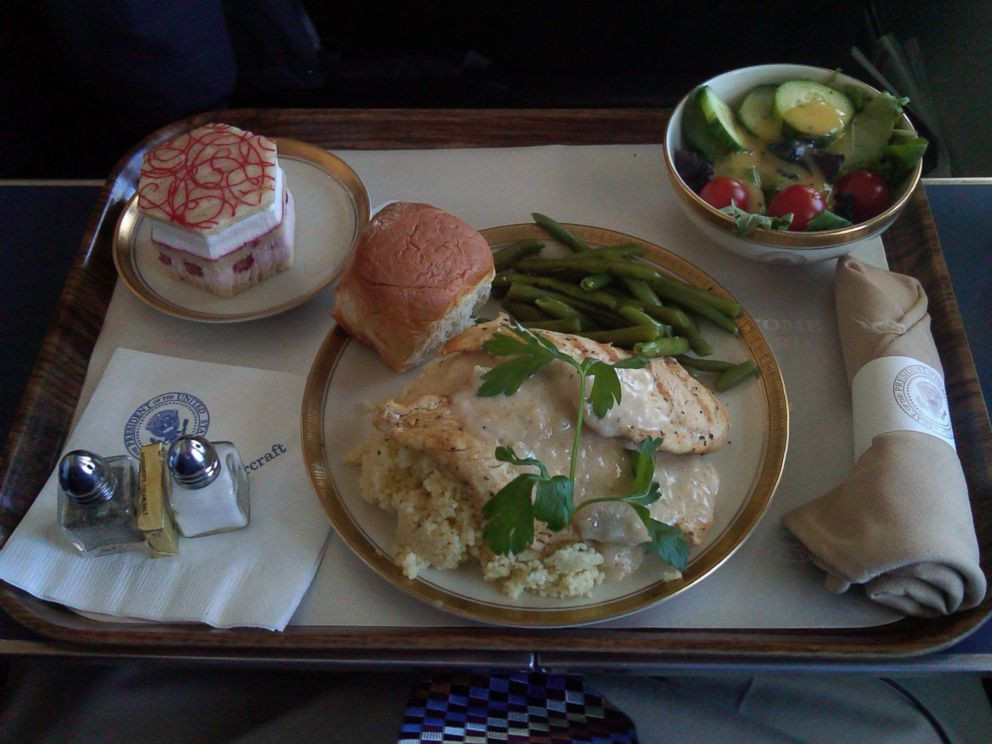 This photo shows a typical meal on Air Force One.
This photo shows a typical meal on Air Force One.
Forget peanuts and pretzels – dining on Air Force One is a first-class experience. Two galleys, staffed by culinary professionals, can cater to up to 100 people with gourmet meals. Menus are carefully planned, but the staff also maintains a supply of groceries to accommodate any presidential cravings. This level of culinary service ensures that the President and the traveling team are well-nourished and comfortable, regardless of the duration of the flight.
7. “Angel” in the Sky: More Than One Name
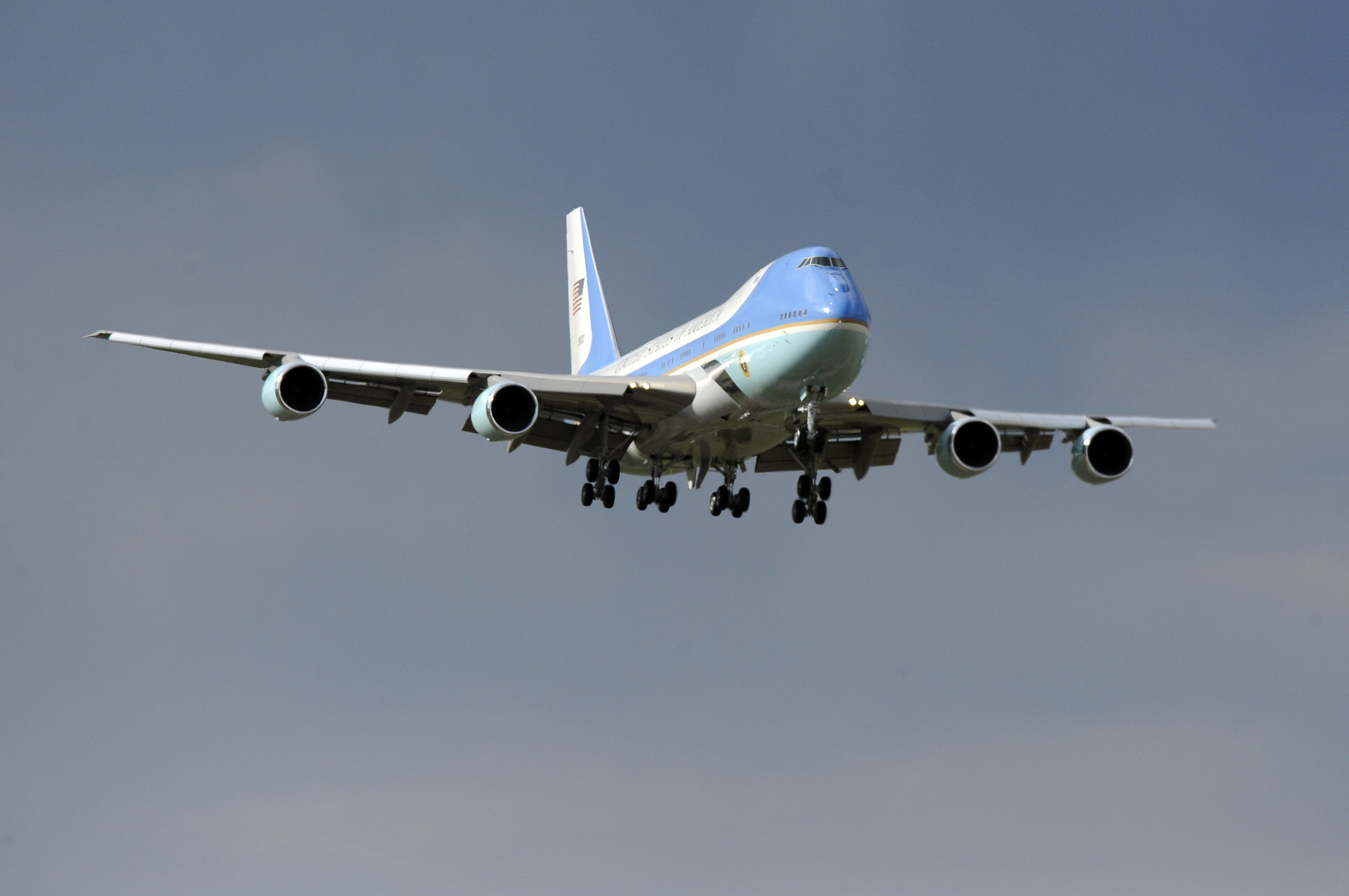 Air Force One made an approach from the north as it came in for a landing at Buckley Air Force Base, April 24, 2012.
Air Force One made an approach from the north as it came in for a landing at Buckley Air Force Base, April 24, 2012.
Adding to the mystique, Air Force One has multiple designations. While “Air Force One” is the widely recognized call sign, its official Air Force designation is VC-25A. Intriguingly, its classified call name is “Angel.” This adds a layer of secrecy and reverence to the presidential aircraft, reflecting its unique and vital role.
8. Fortified Fortress: Bulletproof and Secure
 President Barack Obama, surrounded by US Secret Service agents, walks to greet guests after arriving on Air Force One at Griffiss International Airport in Rome, New York on May 22, 2014.
President Barack Obama, surrounded by US Secret Service agents, walks to greet guests after arriving on Air Force One at Griffiss International Airport in Rome, New York on May 22, 2014.
Security is paramount for Air Force One. While specific defensive capabilities are classified, it is understood to be a highly fortified military aircraft capable of functioning as a bunker in extreme situations, even a nuclear attack. It is designed to repel airborne missiles and features electronic countermeasures to jam enemy radar. This robust defense system ensures the President’s safety in any environment, reinforcing its role as a secure and reliable platform.
9. Flying Emergency Room: Healthcare on Demand
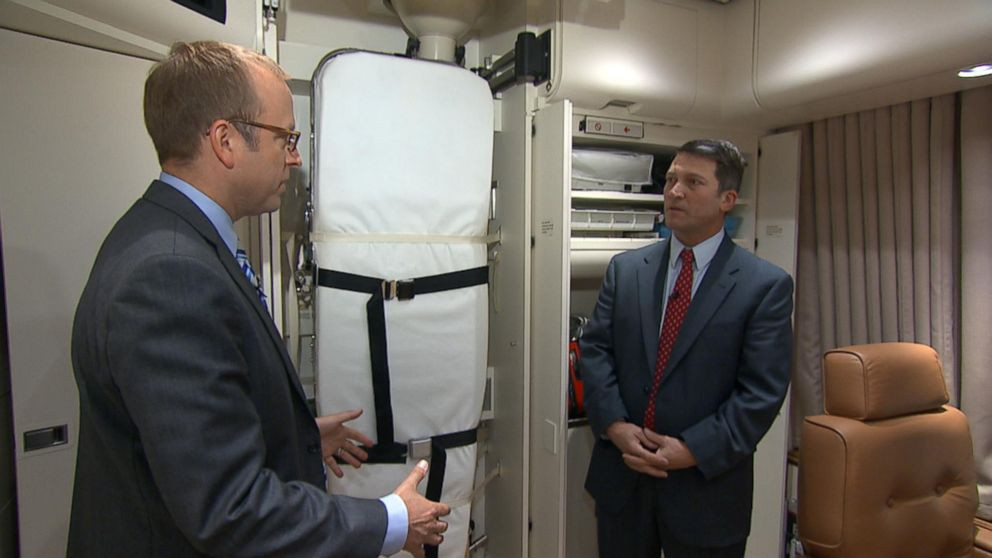 This photo shows the medical annex on Air Force One.
This photo shows the medical annex on Air Force One.
Air Force One is not only a command center but also a flying hospital. A physician is always onboard during presidential flights, and the aircraft features a fully-equipped medical suite. This medical annex functions as an operating room, stocked with a comprehensive pharmacy, surgical tools, and an operating table. For extended international travel, it even carries a reserve supply of the President’s blood type, ensuring immediate medical attention is available in any emergency.
10. “The Beast” Onboard: Presidential Convoy Ready
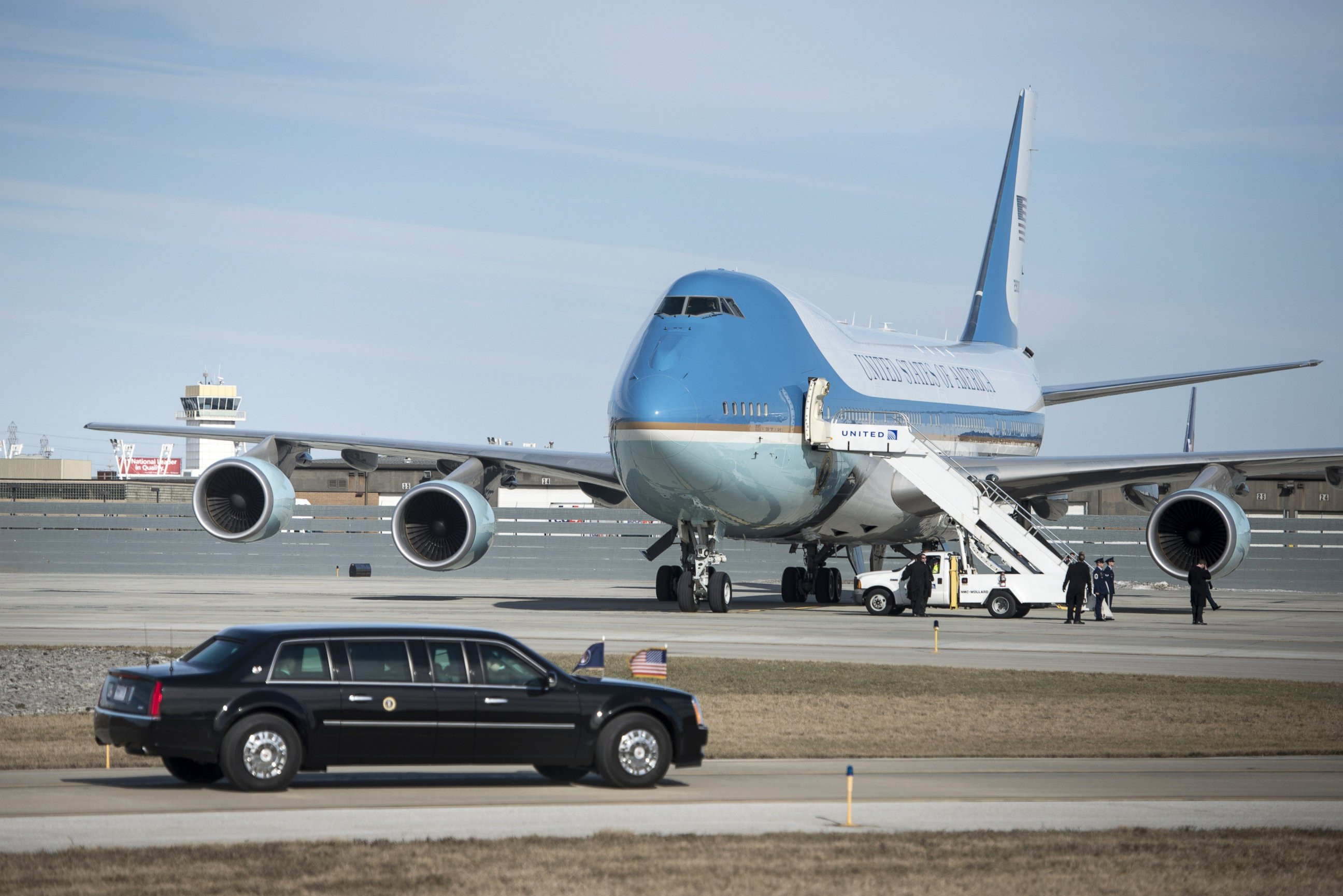 US President Barack Obama's armored limo drives to Air Force One at Cleveland-Hopkins International Airport on March 18, 2015 in Cleveland, Ohio.
US President Barack Obama's armored limo drives to Air Force One at Cleveland-Hopkins International Airport on March 18, 2015 in Cleveland, Ohio.
The logistical planning for presidential travel is extensive. “The Beast,” the President’s heavily armored limousine, is transported ahead of Air Force One on military cargo planes. This ensures that the presidential vehicle is ready and waiting upon arrival at any destination. This detail highlights the comprehensive support system that accompanies the President, ensuring seamless transitions and security at every stage of travel.
Conclusion: Speed and Sophistication in the Sky
So, how fast does Air Force One fly? It can reach speeds close to the sound barrier, approximately 600 mph or Mach 0.92. But speed is just one facet of this extraordinary aircraft. Air Force One represents a pinnacle of aviation technology, combining rapid global transit with unparalleled security, communication capabilities, and luxurious amenities. It is a symbol of American leadership and a testament to the advanced engineering and logistical prowess that supports the President of the United States.
